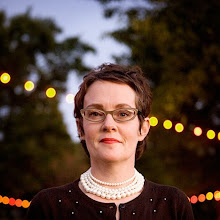
Street poster in Venice. All photos courtesy the author.
Again, more politics. This poster was plastered around San Marco, looking like Elizabeth Peyton except for the text. After looking for anti-Catholic posters in Venice I found a lot of interesting things--Venice, perhaps because of its independent stature for so long, wasn't a friend of Rome. Anyone know who did this work?

Song Dong in the Arsenale.
China's Song Dong remains one of my favorite artists with whom I've worked. I commissioned him to do a work for my show Water, Water Everywhere... at the Scottsdale Museum of Contemporary Art. His work is thoughtful and meditative, like this ramshackle construction that suggests a labyrinth and a soon-to-be-destroyed warren of alleys. Several works were also embraced inside the walls of this construction--hiding out or finding other meanings?

Liina Siib in the Estonian pavilion.
In her project Woman Takes Up Less Space in the Estonian pavilion, Siib challenges the assertion in Estonia that since women take up less space they can be paid lower salaries. In the un-fancy apartment Siib creates tweaked rooms with the images and words of Estonian women jumping off the wall. The work was funny and very sad.

Faycal Baghriche in The Future of a Promise.
Loved this madly spinning globe by Faycal Baghriche. It reminded me of Charlie Ray's spinning disc set flush into a wall--its effects almost invisible but certainly deadly.

Maria Rosa Jijon in the Latin American pavilion in the Arsenale.
Finally, one of the compelling political videos in the Latin American pavilion.




























